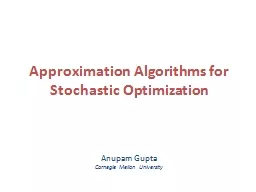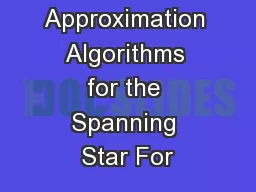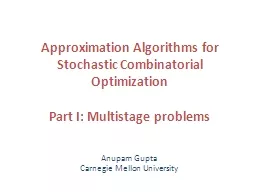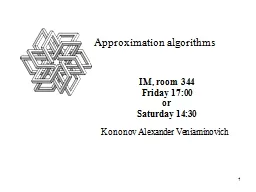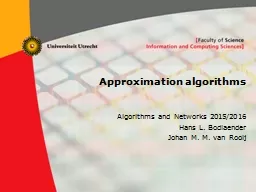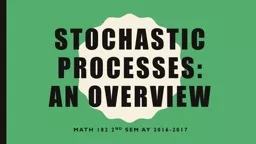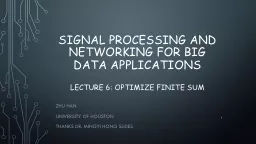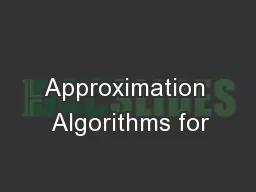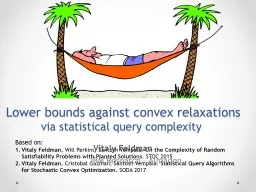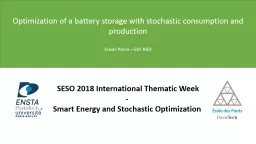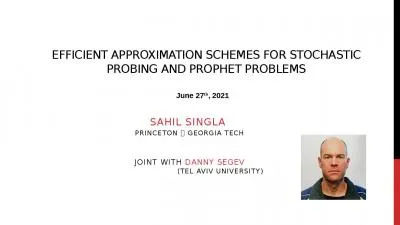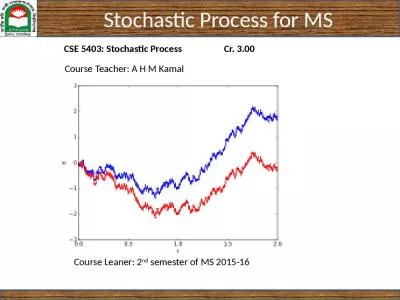PPT-Approximation Algorithms for Stochastic Optimization
Author : danika-pritchard | Published Date : 2016-04-29
Anupam Gupta Carnegie Mellon University stochastic optimization Question How to model uncertainty in the inputs data may not yet be available obtaining exact data
Presentation Embed Code
Download Presentation
Download Presentation The PPT/PDF document "Approximation Algorithms for Stochastic ..." is the property of its rightful owner. Permission is granted to download and print the materials on this website for personal, non-commercial use only, and to display it on your personal computer provided you do not modify the materials and that you retain all copyright notices contained in the materials. By downloading content from our website, you accept the terms of this agreement.
Approximation Algorithms for Stochastic Optimization: Transcript
Download Rules Of Document
"Approximation Algorithms for Stochastic Optimization"The content belongs to its owner. You may download and print it for personal use, without modification, and keep all copyright notices. By downloading, you agree to these terms.
Related Documents

